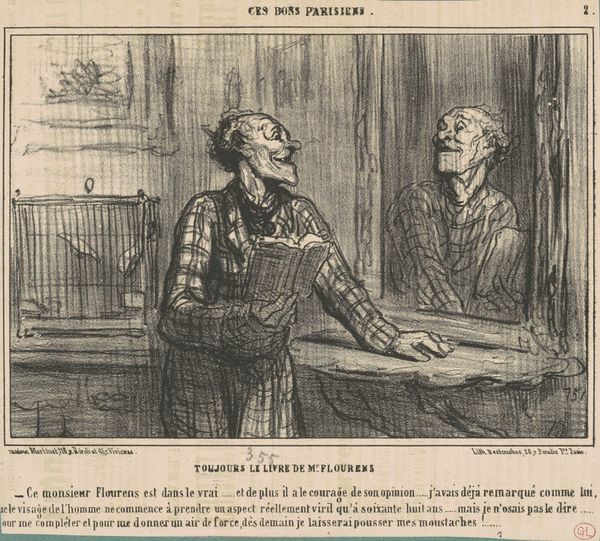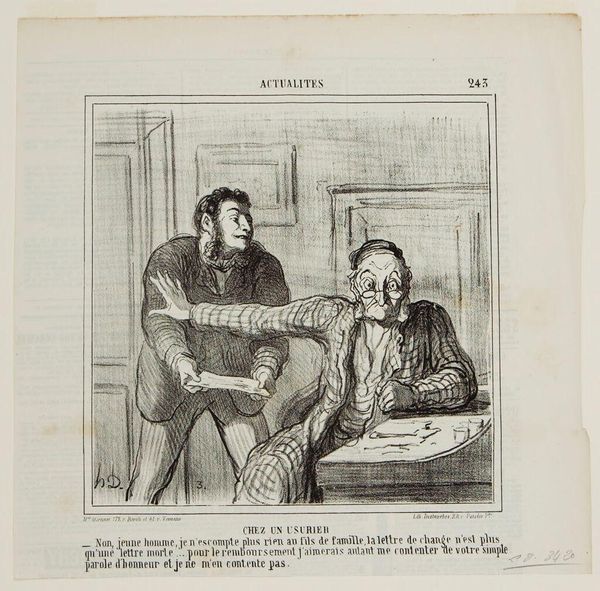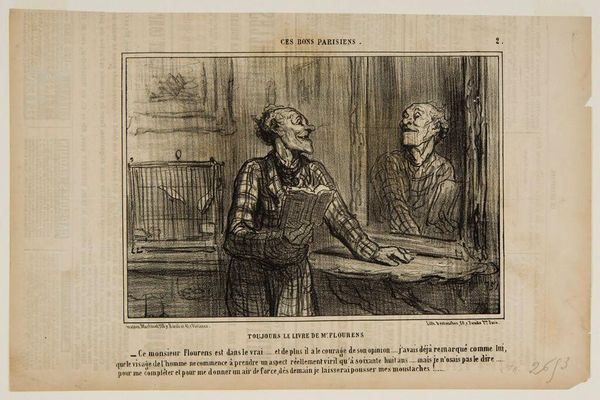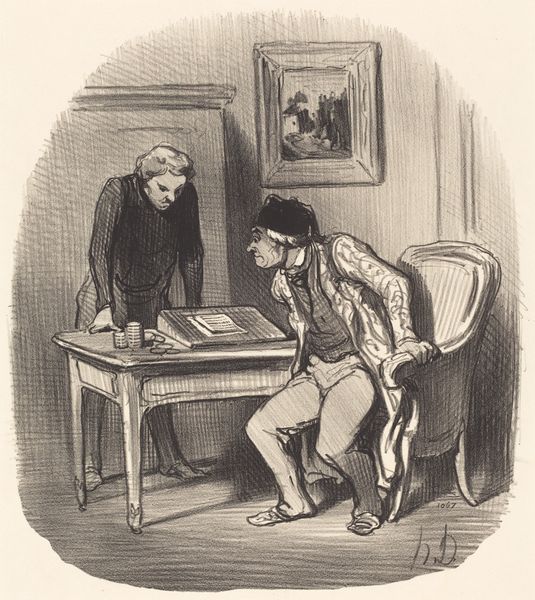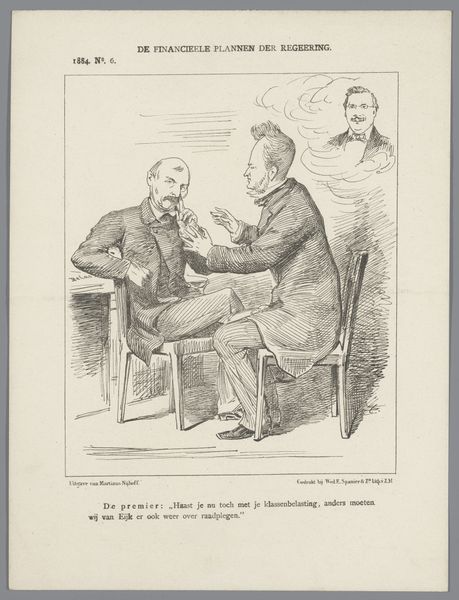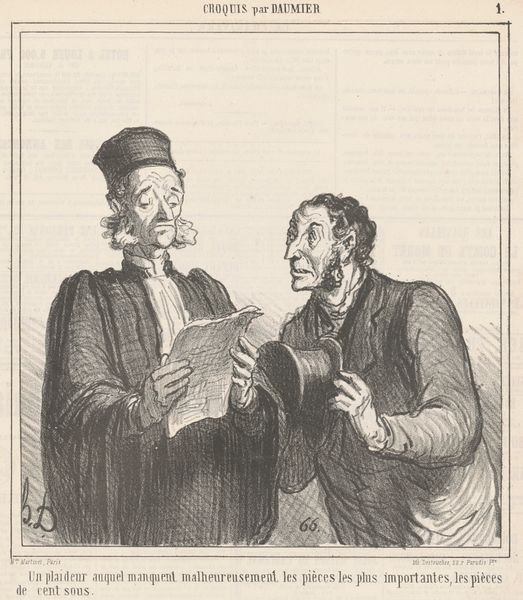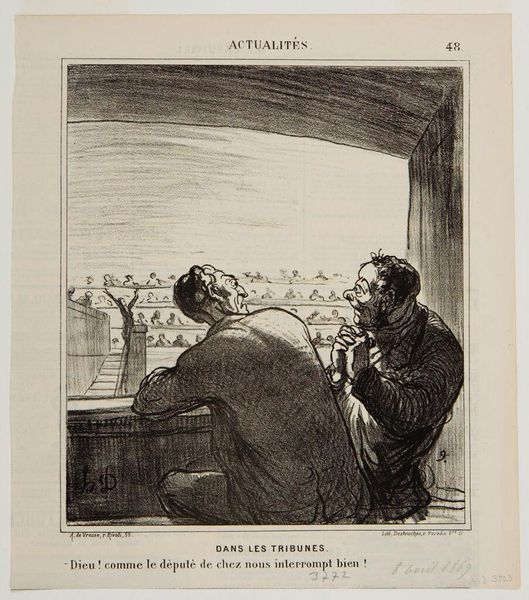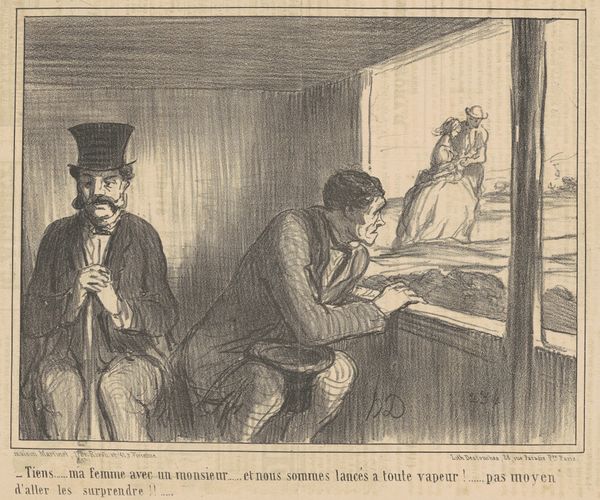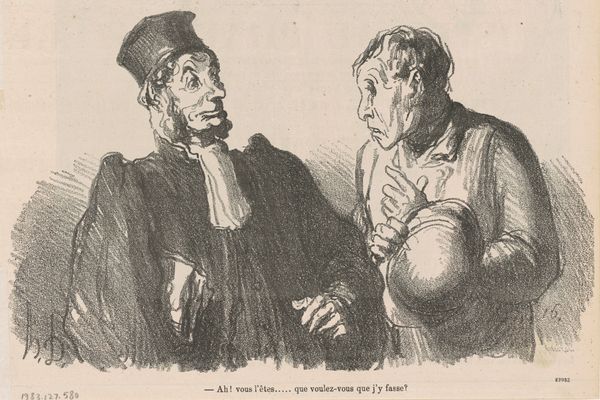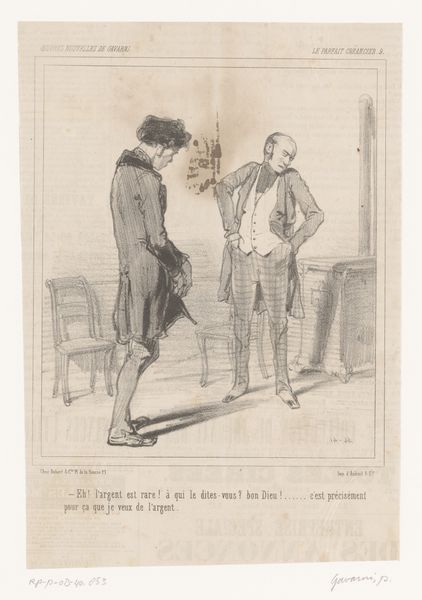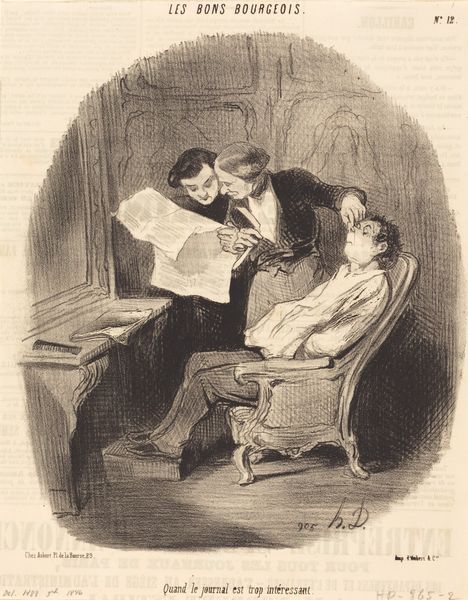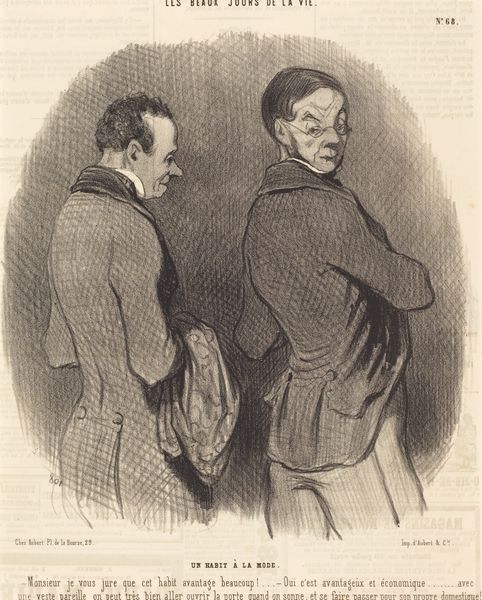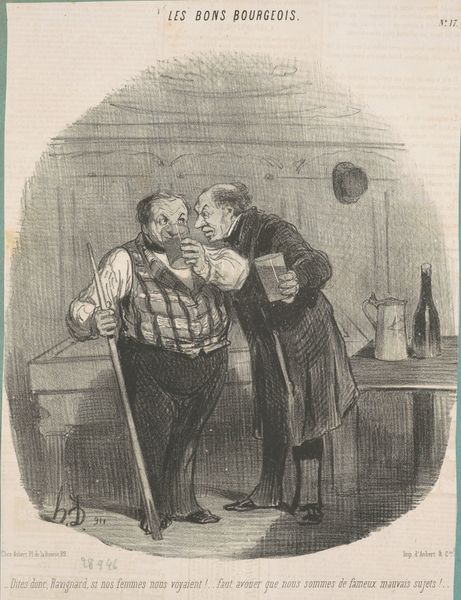
lithograph, print
#
portrait
#
lithograph
# print
#
caricature
#
figuration
#
genre-painting
#
history-painting
Copyright: National Gallery of Art: CC0 1.0
Curator: Welcome. The work we're looking at today is a lithograph from around the 19th century called "Chez un usurier", or "At a Usurer's." It's by Honoré Daumier. Editor: The immediate feel? Pressure. I see a tight composition, two figures close together, one seemingly cornered, like a moth pinned under glass. The light and shadow really drive up the anxiety. Curator: Indeed. Daumier often used his prints to comment on the social issues of his time. The subject of usury, or lending money at exorbitant interest rates, was ripe for critique. This piece presents an interaction in the usurer’s office, with the figure on the right seeming very reluctant to pay up. Editor: I love how Daumier captures that reluctant hand gesture, pushing back, warding off the advance. The man’s face is so tight. It's the perfect portrait of financial stress—which, let's face it, feels pretty timeless. Curator: The print appears at a time of huge upheaval, where established class boundaries were shifting alongside changing fortunes and emerging markets. The caption at the bottom also emphasizes the contrast between “a family's son” and “your honorable word", and suggests a power imbalance—favoring capital over character. Editor: You know, I'm always drawn to how caricature exposes truths we'd rather ignore. It allows us a certain dark pleasure in watching uncomfortable human interactions unfold. A cathartic release, maybe? Look at those almost comical facial features! This caricature feels almost confrontational. Curator: Yes. These prints originally appeared in newspapers and periodicals. The lithographic medium allowed for wider dissemination and rapid distribution of social commentary. So, these scenes were incredibly accessible to everyday people. Editor: Knowing that it was intended for wider consumption gives this encounter an extra dimension, right? Like, we’re all somehow implicated as viewers of this slightly twisted interaction between lender and borrower. We recognize it. Curator: And that recognition is precisely what Daumier hoped to provoke. By offering this image of social commentary to a wide audience, Daumier sparked conversation on very real concerns. Editor: Yeah. Well, suddenly, I feel a bit poorer, or perhaps, richer, in perspective. It always amazes me how a single artwork from the 19th century manages to find its way into our 21st.
Comments
No comments
Be the first to comment and join the conversation on the ultimate creative platform.
